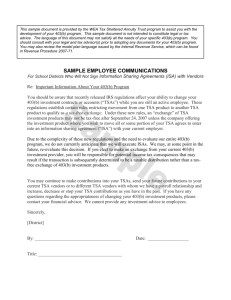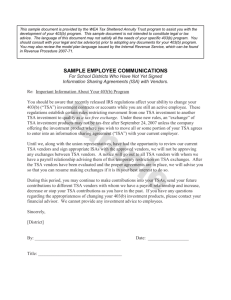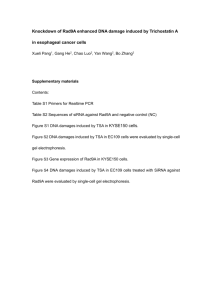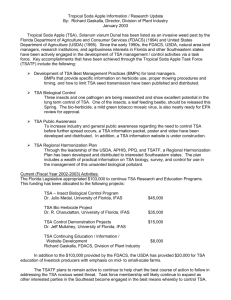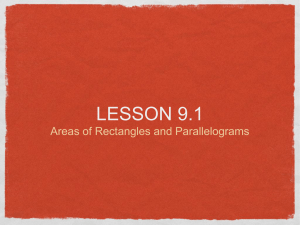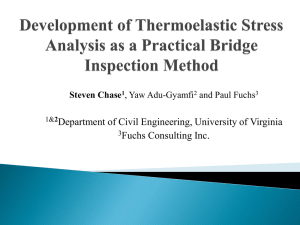Figure legends for Supplemental Figures
advertisement
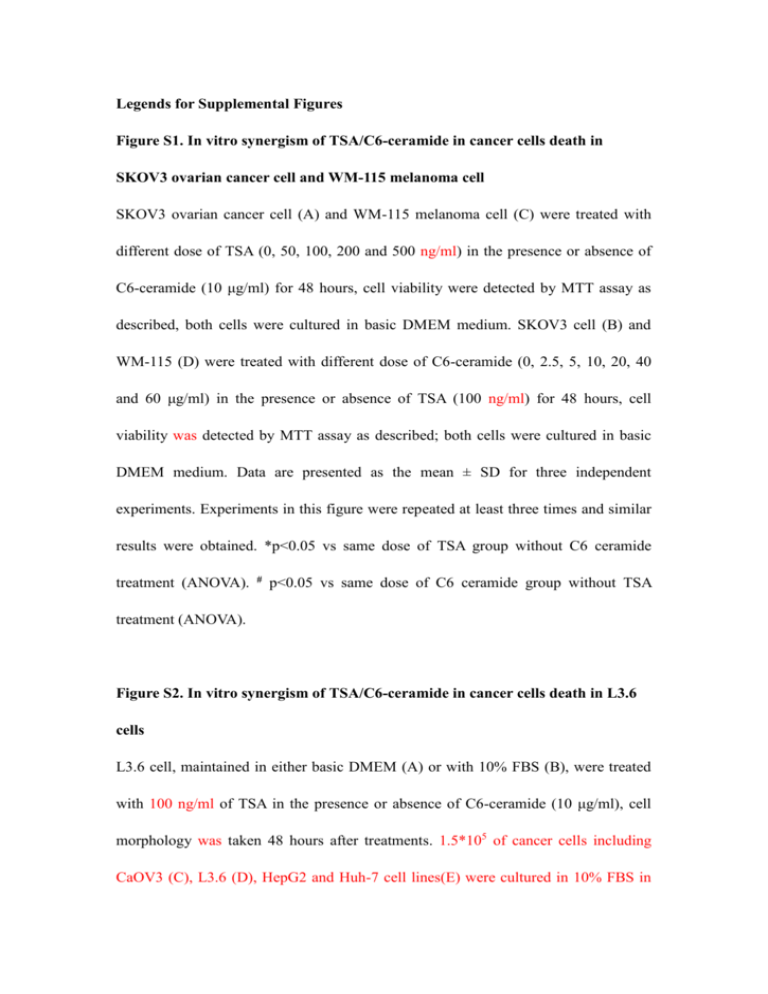
Legends for Supplemental Figures Figure S1. In vitro synergism of TSA/C6-ceramide in cancer cells death in SKOV3 ovarian cancer cell and WM-115 melanoma cell SKOV3 ovarian cancer cell (A) and WM-115 melanoma cell (C) were treated with different dose of TSA (0, 50, 100, 200 and 500 ng/ml) in the presence or absence of C6-ceramide (10 μg/ml) for 48 hours, cell viability were detected by MTT assay as described, both cells were cultured in basic DMEM medium. SKOV3 cell (B) and WM-115 (D) were treated with different dose of C6-ceramide (0, 2.5, 5, 10, 20, 40 and 60 μg/ml) in the presence or absence of TSA (100 ng/ml) for 48 hours, cell viability was detected by MTT assay as described; both cells were cultured in basic DMEM medium. Data are presented as the mean ± SD for three independent experiments. Experiments in this figure were repeated at least three times and similar results were obtained. *p<0.05 vs same dose of TSA group without C6 ceramide treatment (ANOVA). # p<0.05 vs same dose of C6 ceramide group without TSA treatment (ANOVA). Figure S2. In vitro synergism of TSA/C6-ceramide in cancer cells death in L3.6 cells L3.6 cell, maintained in either basic DMEM (A) or with 10% FBS (B), were treated with 100 ng/ml of TSA in the presence or absence of C6-ceramide (10 μg/ml), cell morphology was taken 48 hours after treatments. 1.5*105 of cancer cells including CaOV3 (C), L3.6 (D), HepG2 and Huh-7 cell lines(E) were cultured in 10% FBS in the presence or absence of 100 ng/ml of TSA. Cell number was counted 24 and 48 hours later. Experiments in this figure were repeated at least three times and similar results were obtained. Bar=25 μm. Figure S3. In vitro synergism of TSA/C6-ceramide in inducing cancer cell apoptosis in L3.6 and SKOV3 cells The apoptosis of L3.6 cells and SKOV3 with indicated treatment (Control, 100/200 ng/ml of TSA, 10 μg/ml of C6 ceramide and TSA plus C6 ceramide) for 36 hours was detected by Histone DNA apoptosis ELISA assay (A and C) and Hoechst 33342 assay (B and D). For each Hoechst experiment at least 200 cells in 10 random scope fields were counted for apoptotic rate (C). Data are presented as the mean ± SD for three independent experiments. Experiments in this figure were repeated at least three times and similar results were obtained. * P<0.05 (ANOVA). Figure S4. Caspase inhibitors inhibits TSA+C6 induced cancer cell death in L3.6 cells L3.6 cells were treated with 100 ng/ml of TSA in the presence or absence of 10 μg/ml of C6-ceramide for 8 and 16 hours, the expression level of Bax, cleaved-caspase 3, cleaved-caspase 9 and β-actin were detected by Western Blot (A). L3.6 cells were pretreated with Caspase inhibitor Z-DEVDfmk (50 μM), and z-LEHDfmk (50 μM) for 2 hour, followed by TSA (100 ng/ml) plus C6-ceramide (10 μg/ml) treatment, cell viability was detected by MTT assay (B). Data are presented as the mean ± SD for three independent experiments. Experiments in this figure were repeated at least three times and similar results were obtained. * P<0.05 (ANOVA). Figure S5. AKT 1/2 double knockout block AKT/mTOR activation in MEFs AKT/mTOR activation and AKT1/2 expression in WT and AKT1/2 double knockout MEFs were detected by Western blot using commercial available antibodies described above. Experiments in this figure were repeated at least three times and similar results were obtained. Figure S6. In vitro synergism of TSA/C6-ceramide in inhibiting AKT Ser 473 phosphorylation L3.6 cells were either left untreated or treated with indicated treatment (100 ng/ml of TSA, 10 μg/ml of C6 Ceramdie and TSA plus C6 Ceraide, 10 μM of AKT inhibitor x) for 12 hours, AKT (S-473)activation were detected by immuno-fluorescence confocal assay. Experiments in this figure were repeated at least three times and similar results were obtained.
